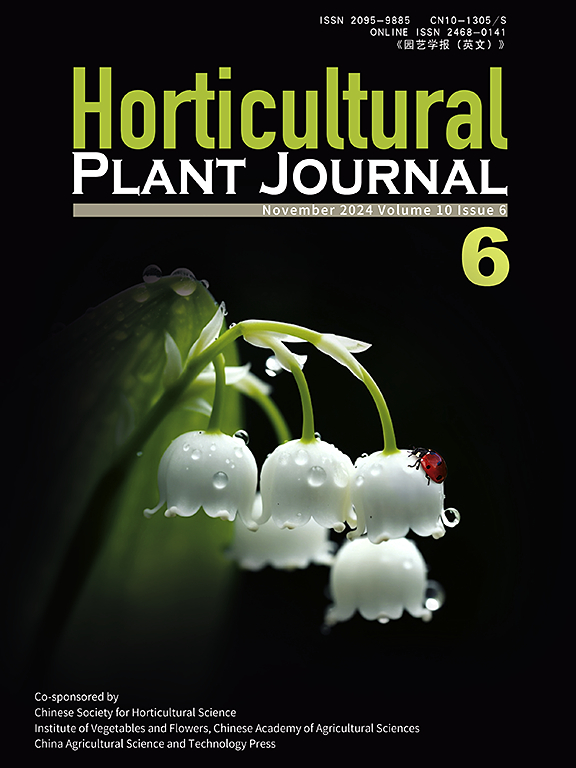PavbHLH102 functions as a positive regulator of anthocyanin biosynthesis in sweet cherry fruit by targeting multiple key genes
IF 6.2
1区 农林科学
Q1 HORTICULTURE
引用次数: 0
Abstract
Anthocyanins play a crucial role in shaping the visual appeal and nutritional quality of fruits. Previous research on anthocyanin biosynthesis in sweet cherry (PavbHLH102通过靶向多个关键基因调控甜樱桃花青素的合成
花青素在塑造水果的视觉吸引力和营养质量方面起着至关重要的作用。以往对甜樱桃花青素生物合成的研究主要依赖于单组学方法或关注有限范围的代谢物,对花青素成熟过程中的调控机制和动态代谢缺乏充分的描述。本研究将花青素靶向代谢组学和转录组学相结合,鉴定甜樱桃中关键花青素,并构建花青素生物合成的转录调控网络。发现了一种新的bHLH转录因子Prunus avium bHLH转录因子102 (PavbHLH102),并通过过表达和沉默实验验证了其在调节花青素水平中的作用。体外和体内实验均表明,PavbHLH102能够激活花青素生物合成的关键基因PavF3H、PavDFR和PavUFGT,从而增强果实的颜色。值得注意的是,PavF3'H的上调显著增加了花青素的积累。本研究为甜樱桃花青素调控提供了新的思路,为提高果实品质提供了宝贵的资源。
本文章由计算机程序翻译,如有差异,请以英文原文为准。
求助全文
约1分钟内获得全文
求助全文
来源期刊

Horticultural Plant Journal
Environmental Science-Ecology
CiteScore
9.60
自引率
14.00%
发文量
293
审稿时长
33 weeks
期刊介绍:
Horticultural Plant Journal (HPJ) is an OPEN ACCESS international journal. HPJ publishes research related to all horticultural plants, including fruits, vegetables, ornamental plants, tea plants, and medicinal plants, etc. The journal covers all aspects of horticultural crop sciences, including germplasm resources, genetics and breeding, tillage and cultivation, physiology and biochemistry, ecology, genomics, biotechnology, plant protection, postharvest processing, etc. Article types include Original research papers, Reviews, and Short communications.
 求助内容:
求助内容: 应助结果提醒方式:
应助结果提醒方式:


